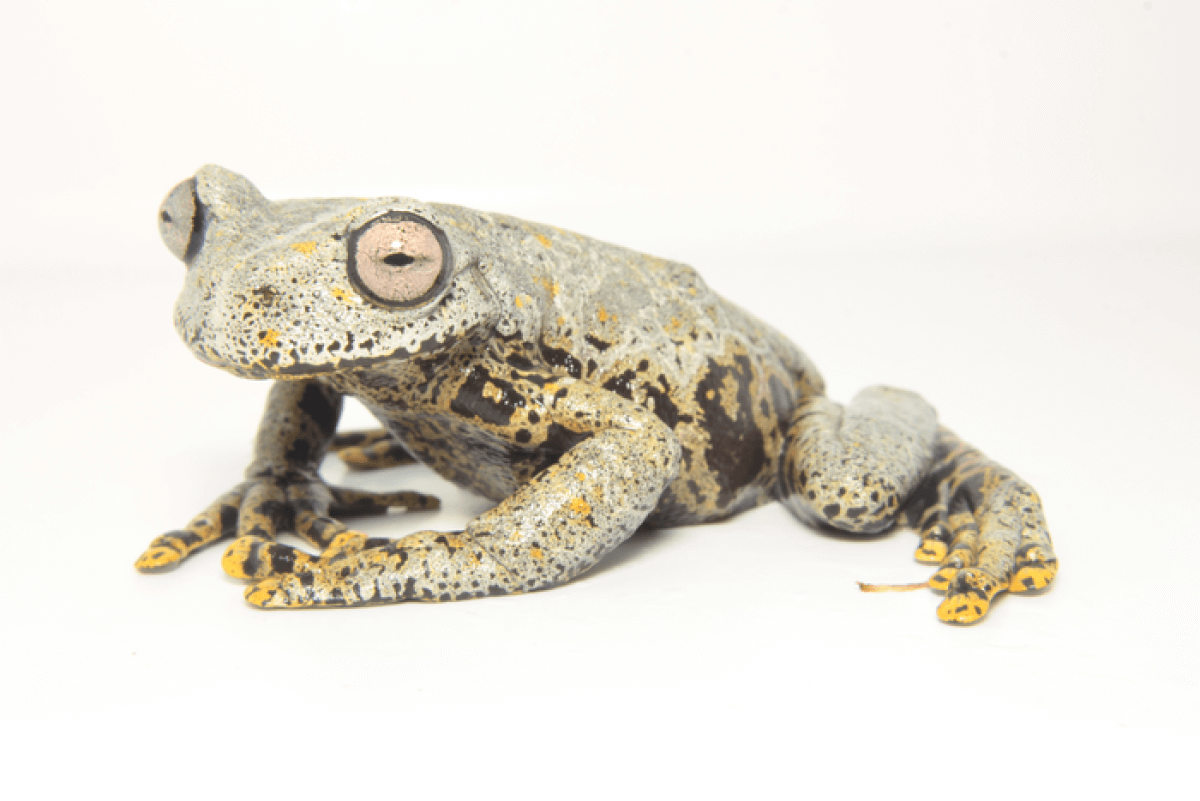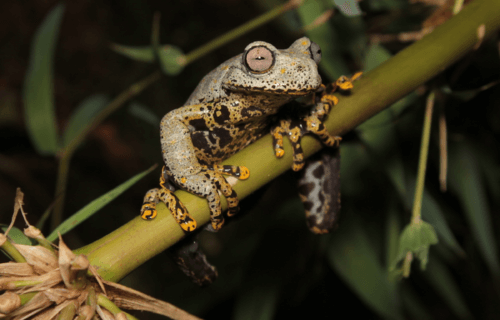QUITO, Ecuador — While scientists have yet to discover a hobbit from the shire, a major amphibian discovery in South America just might be the next best thing for Tolkien fans. Researchers are naming a spectacular new species of stream frog just discovered in the Andes of Ecuador after J.R.R. Tolkien, famed creator of Middle-earth and author of famous fantasy works “The Hobbit” and “The Lord of the Rings.”
The new stream frog species, formally named Hyloscirtus tolkieni, resides in the pristine waters of the Río Negro-Sopladora National Park, a recently declared protected area that preserves thousands of hectares of almost primary forests in southeastern Ecuador.
Stream frogs live throughout the high Andes of Venezuela, Colombia, Ecuador, Peru, and Bolivia. The lives of these amphibians have a close link to the pure rivers and streams found among the mountain areas of the Andes — which is why scientists call them stream frogs in the first place. Adult stream frogs live in the riparian vegetation, while their tadpoles develop closer to the rocks of the rapid waters of the rivers.
The researchers behind this discovery, Juan C. Sánchez-Nivicela, José M. Falcón-Reibán, and Diego F. Cisneros-Heredia, say they chose to name the new species after one of their favorite authors. J.R.R. Tolkien was a renowned author, poet, philologist, and academic. However, he is best remembered as the creator of Middle-earth and his two most famous works “The Hobbit” and “The Lord of the Rings.” The research team say the fantastic colors displayed by this new frog species reminded them of the magnificent creatures described in Tolkien’s fantasy worlds.

Even more new species may be living in this region
Expeditions being carried out continuously since 2020 throughout the Río Negro-Sopladora National Park in Ecuador have led to the discovery of numerous new species. The area has been protected since 2018, and the national park is home to vast, large forested areas that remains largely unstudied to this day.
“For weeks, we explored different areas of the Río Negro-Sopladora National Park, walking from paramo grasslands at 3,100 meters elevation to forests at 1,000 m. We found a single individual of this new species of frog, which we found impressive due to its coloration and large size,” says study co-author Juan Carlos Sánchez Nivicela, associate researcher at the Museum of Zoology of the Universidad San Francisco de Quito USFQ and the National Institute of Biodiversity, in a media release.
The Río Negro Stream Frog in particular can easily be picked out from its frog relatives thanks to its appearance and unique coloring. It is fairly large (65 mm long), and features a grayish green back with yellow spots and black specks, as well as a pale pink and black iris. Meanwhile, the frog’s throat, belly, flanks, and the undersides of its legs are golden yellow along with large black spots and dots. The frog’s fingers and toes have black bars, spots and broad skin stripes.
Scientists don’t know how many of these frogs exist
“The new species of frog has amazing colors, and it would seem that it lives in a universe of fantasies, like those created by Tolkien. The truth is that the tropical Andes are magical ecosystems where some of the most wonderful species of flora, funga, and fauna in the world are present. Unfortunately, few areas are well protected from the negative impacts caused by humans. Deforestation, unsustainable agricultural expansion, mining, invasive species, and climate changes are seriously affecting Andean biodiversity,” explains Diego F. Cisneros-Heredia, director of the Museum of Zoology of the Universidad San Francisco de Quito USFQ and associate researcher of the National Institute of Biodiversity.
Right now, the new species is only known from one locality and one individual, so we just don’t have enough data to assess its conservation status and risk of extinction. However, study authors do agree that it is incredibly important to establish research and monitoring actions aimed at studying its life history and ecology, as well as its population size and dynamics. Further locations should be explored as well, as more populations may exist. These frogs may be facing any number of threats depending on their location, such as invasive species, mining, emerging diseases, or climate change.
Finding and describing new species is a vital aspect of supporting global strategies for the conservation of vulnerable environments, as it helps illuminate the grand tapestry of biodiversity that is linked to countless natural resources and environmental services. For instance, amphibians are key pest controllers and play huge ecological roles in the overall stability of nature. Worryingly, about 57 percent of amphibian species in Ecuador are at risk of extinction.
The study is published in the journal ZooKeys.

